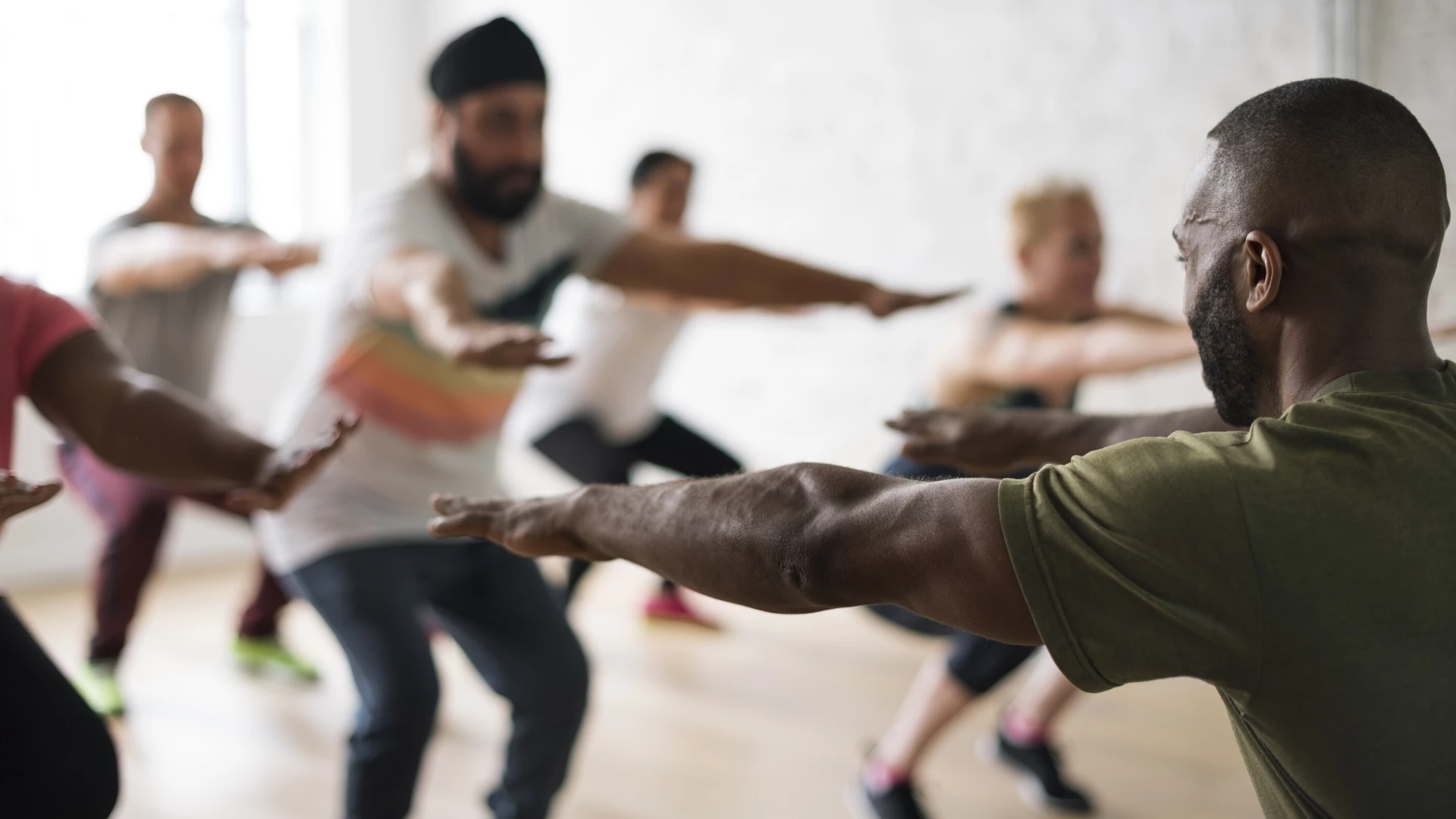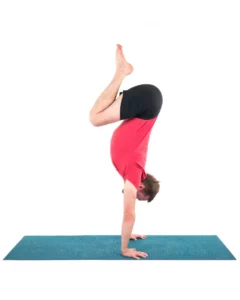Neck Pain from Texting? Yoga Can Help!

As I near the fifth decade of my life, I am becoming more and more aware of my body and its vulnerabilities. Surprisingly, I’ve begun to notice this vulnerability when texting. We’ve all been there: casually texting a friend and then, since we’re on the phone anyway, checking out new posts on Facebook, Twitter, or Instagram. Before we know it, we’ve spent an hour on our phone. I’ve noticed that when I allow myself to engage in this type of activity too long, I feel irritated and restless afterward—and my neck aches.
What Is Text Neck?
This painful pinching feeling is known as “text neck.” It’s said to come from the posture we assume while texting or looking down at our phone (or tablet) too frequently and for too long. Dr. Kenneth K. Hansraj, of New York Spine Surgery and Rehabilitation Medicine, conducted a study on text neck and found that just 15 degrees of forward-head posture almost doubles the weight of the head. He suggests that the position of the head while texting strains the muscles and structures of the neck, contributing to pain.
At the time of the study in 2014, Dr. Hansraj said he believed “text neck” to be an epidemic. “We’re seeing tons of patients who have neck pain,” he said, “and really when you look at the MRIs, they are fairly normal.”
It is interesting that “tons of patients” have found their way into a surgeon’s office complaining of neck pain with no major structural problems. It raises the question: are we considering the big picture when we say that it’s the head position that causes pain? Is it possible that our attitude plays a part in the stress and strain we place on our necks?
Could the Real Issue Go Deeper?
As a physical therapist, I’ve been trained to look for the source of someone’s pain. This often leads me to begin with the physical: which structures are involved, and how do these influence movement? Sometimes, this approach works; others, not so much. In these cases, our bodies might be telling us that the problem may be more than a tight muscle or aging joint.
Returning to text neck, if addressing physical posture alone cured our woes, the prevalence of neck pain should be decreasing, right? After all, stores sell expensive ergonomic chairs designed to fit the body and prevent pain; posture bras, thera-canes, and other devices are touted to reduce muscle strain and prevent slouching.
The truth is, our muscles don’t work independently from our brains, so these products can only do so much.
Our mood and emotions are expressed through our bodies; research supports the idea that there is a psycho-emotional component to pain. If we are sad, we slump. If we feel joy, our posture will appear more vital and alive. If we feel stressed, we may experience irritability, shallow breathing, fatigue, and/or lack of joy in life—all culminating in physical pain.
The way you are in the world influences those around you, just as others’ energy affects you. If we lack mind-body awareness, we may be slow to notice how our mood, behavior, and environment influence our physiology and health.
In light of this, we must consider how our environment affects our mental and emotional health. Our world is pretty over-stimulating: 77 percent of Americans and over 40 percent of the world own smartphones, and these tiny handheld computers have constructed a new level of social pressure and emphasis on instant gratification. We feel compelled to respond quickly to texts or tags, and the swish noise lets us know all day long that we have a mounting pile of emails to attend to. These incessant notifications do not foster clarity, focus, or patience—they are distractions pulling our attention away from the here and now.
While many of these apps arguably make our lives easier and more efficient, is an attachment to our smartphone truly crucial for our livelihood? Or are we just listlessly searching for connection? Do our close relationships have intimacy, meaning, and depth? Do we feel appreciated in our life and career? Do we have a sense of purpose about our lives? A lack of these things in our lives may be more to blame than posture when it comes to (neck) pain.
5 Tips for Living in Harmony With Your Technology
Below are suggestions for preventing or reducing the effects of text neck. The combination of these things is intended to address the physical, emotional, and mental causes of pain:

-
Move. Adjust your position frequently during the day for both comfort and perspective. Staying in one position too long is not good for our muscles or our health. If we move the body in ways that counter our forward-head position, we limit the effects of text neck. Certain yoga poses can be helpful in counteracting forward-head position.
-
Limit interruptions. Just because someone texts us does not mean we have to stop what we’re doing to respond and react. Remove apps from your phone or tablet that interrupt you or encourage you to engage unnecessarily. If we allow ourselves to consistently attend to interruptions, we are in chronic fight-or-flight mode. The stress that constant stimulation places on our nervous systems may cause muscle tension, but may also contribute to other health problems such as anxiety, depression, and heart disease. We have the ability to manage our interactions—so do so with care!
-
Practice mindfulness. Mindfulness is about bringing attention to the present moment while being fully aware of ourselves and our environment. Notice how your interactions affect your physical body and breath. Do you experience tension in your neck or resistance in your breath when interacting with certain people or performing certain tasks? Is the resistance justified or are you creating a story around what might happen if … ? Being mindful helps us better discern how our thought patterns and behaviors affect us and those around us. With this awareness, we can then behave in a way that honors our path, rather than just reacting.
-
Carefully choose which social media groups you join. Do these groups support, educate, and inspire?
-
Leave your phone behind. Go for a walk, have lunch with a friend, or simply go several hours a day without electronic distraction—no explanation necessary.
Text neck may be a gift—our body’s way of letting us know that we are not present enough in our lives. The convenience of technology is undeniable, but we are still responsible for how we use it. “My favorite things in life don’t cost any money,” Steve Jobs said. “It’s really clear that the most precious resource we all have is time.”
How will you choose to spend it?
More on this topic from YogaUOnline and Erik Dalton, Ph.D. – Yoga Anatomy: Forward Head Posture-Part 1.
5 Yoga Poses To Ease Text Neck – an article from writer Christine Malossi and YogaUOnline.
This article is reprinted with permission from elephantjournal.com
 Christine Carr, MSPT, DPT, E-RYT 500
Christine Carr, MSPT, DPT, E-RYT 500
Christine has been a physical therapist for over 20 years and has taught yoga since 2007. She owns a private practice in Evergreen, CO where she utilizes both physical therapy and yoga therapeutics in treating clients. Christine has taught workshops on how to better utilize yoga for healing the body in both the United States and Canada. For more information on Christine or her clinic please visit www.synergyptyoga.com


